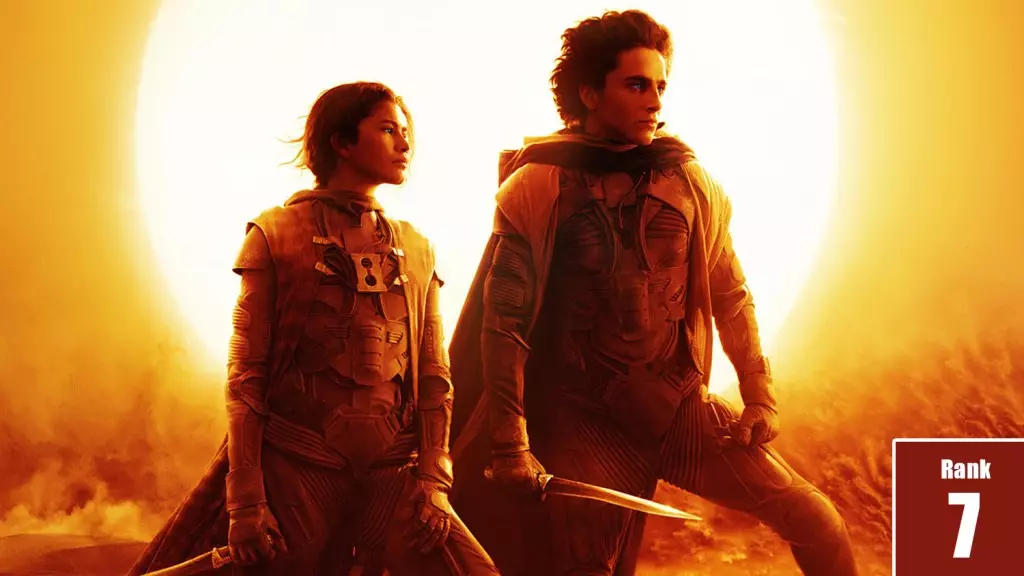The film industry is undergoing a seismic shift, away from traditional box office paradigms to a more complex web of revenue streams. As Deadline’s Most Valuable Blockbuster tournament illustrates, the financial life of a film extends far beyond its opening weekend figures. The global pandemic triggered a revolution in how movies generate revenue, and yet, we are perplexed by the failure to adapt intelligently. While studios like Disney and Warner Bros. once thrived on box office returns, the new kingpins, the likes of Amazon and Apple, are restructuring the game entirely. An exclusive focus on initial ticket sales has proven shortsighted; it’s high time that industry veterans understand that a movie’s success is multifaceted, shaped not just by theatrical receipts but also by downstream profits from streaming, merchandise, and international distribution.
The Streaming Wildcard and Its Hidden Metrics
As streaming platforms grow in influence, they inevitably bring their own opaque metrics that traditional studios struggle to grasp. Major players such as Amazon MGM Studios and Apple Original Films now have the luxury of operating in a space where they’re not bound by the same financial scrutiny that constrains classic film studios. The exclusion of these streamers from traditional box office analyses highlights a growing divide in the industry. Their ability to view post-cinema success through a lens divorced from conventional profit-and-loss statements presents a real challenge for studios grounded in historical metrics. The lack of transparency in streaming success means that many successful films may still be branded as flops by traditional evaluations, creating gaps in understanding that could affect future projects.
Case Study: Dune’s Journey to Profitability
Take, for example, “Dune: Part Two,” which serves as a critical case study on how production dynamics are evolving. Warner Bros and Legendary faced the challenge of justifying a hefty $190 million production budget to stakeholders. Despite “Dune: Part One” achieving a respectable box office, executives had to innovate, projecting potential revenues in a way that acknowledged the abnormal pandemic conditions. Here, the real challenge lay in balancing artistic vision with financial realities—a struggle many creators would recognize. The decision to shoot in Imax, combined with strategic global marketing, ultimately resulted in impressive returns.
The film’s release strategy—delayed amid the SAG-AFTRA strike—reflected a larger concern about the film’s marketing under the changed conditions. While it could be construed as industry over-cautiousness, one must acknowledge the wisdom in not launching a high-budget film without robust promotional backing in today’s content-saturated market. The results were telling: a billion-dollar franchise stands on the shoulders of careful planning and understanding audience demographics in addition to marketing dollars.
The Audience’s Role in Shaping Success
What can’t be ignored is the audience’s evolving interaction with films. Traditional demographics are shifting, with younger viewers emerging as inroads into older franchises. In the case of “Dune: Part Two,” nearly a third of the audience were in the 18-24 age bracket—a key demographic that not only brings in ticket sales but contributes significantly to social media buzz, an invaluable asset in a saturated entertainment landscape. Warner Bros managed to convert social media engagement into a robust cash flow, reinforcing that understanding your audience is just as crucial as crafting a compelling narrative.
With a budget exceeding $155 million for marketing alone, it illustrates a significant gamble, and one that appears to have paid off. But this raises a broader question of sustainability: Can budgets continue to inflate based on expected local marketing efficacy, or will we see a backlash as audiences tire of the same old franchises dressed in shiny packages?
The Struggle for a Sustainable Future
As the dust settles from the ongoing transitions, the industry stands at a crossroads. Films are becoming intricately tied to streaming networks, leading to an inevitable overlap that complicates traditional roles within the industry. Despite Quantitative Easing in film production budgets fueling high stakes, is there an impending backlash on the horizon? Are audiences beginning to perceive cinematic releases as a mere extension of streaming services rather than standalone events?
The momentum for an integrated industry model will likely continue, but one must question how long these lucrative streaming deals can sustain a studio’s bottom line. As we gaze into cinema’s near future, questions remain: who will dictate the terms of success, and how will we navigate this labyrinth of financial complexity without losing the art intrinsic to filmmaking? The road ahead is both thrilling and treacherous—best suited for those willing to adapt, innovate, and rethink a success paradigm that clearly requires a reset.

